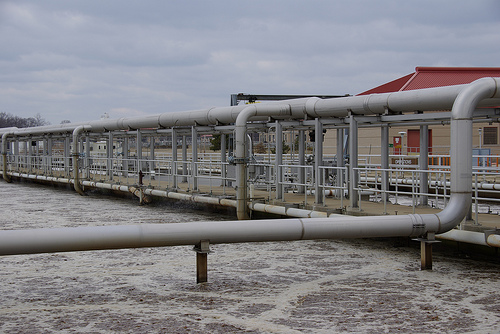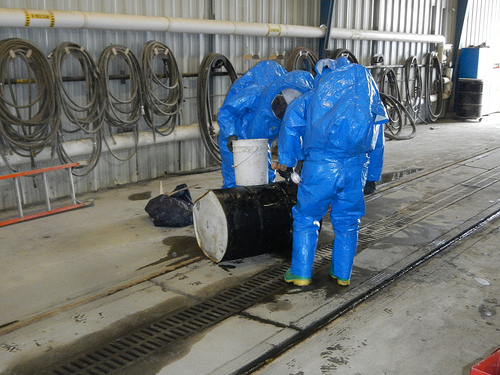A wide variety of Occupational Safety and Health Administration (OSHA) standards require employers to acquire or create documentation of employees’ exposures to potentially hazardous materials and contaminants in their workplaces, and to inform employees of the presence of these hazards. For example, the Hazard Communication Standard (Hazcom) requires most employers to acquire Safety Data Sheets (SDSs) and provide workplace labeling and employee training. Other standards require employers to monitor their workplaces for airborne exposures to contaminants, and to compare such exposures to permissible exposure limits (PELs) or action levels. Some standards require employers to conduct medical monitoring of employees who are subject to such exposures. These records can be vitally important to provide information on long-term (chronic) health effects of exposures.
Audit, Compliance and Risk Blog
Jon Elliott
Recent Posts
Meeting OSHA Requirements On Employee Exposure And Medical Records
Posted by Jon Elliott on Tue, Sep 22, 2015
Tags: Employer Best Practices, Health & Safety, OSHA, Employee Rights, EHS, Hazcom
SEC Ponders Responsibilities For Board of Directors’ Audit Committees
Posted by Jon Elliott on Tue, Sep 15, 2015
Boards of directors are responsible for governing their corporations. Many boards divide their work among committees. Committees often include an “audit committee,” with responsibilities that may include:
Tags: Business & Legal, SEC, Accounting & Tax, Audit Standards
Although Environmental Health and Safety (EH&S) requirements target hundreds of micro-organisms (primarily viruses and bacteria), regulation of important hazards remain on the drawing boards, awaiting appropriate testing and control methodologies, sufficient resources … and high enough political priorities. Until recently, one of these unregulated pathogens has been the legionella bacterium, first identified in 1976 as the cause of “Legionnaire’s disease” – named after an outbreak at an American Legion convention in Philadelphia traced to the hotel’s air conditioning system. This summer, however, an outbreak in New York has led state and local health agencies to adopt extremely ambitious testing and disinfection programs.
Tags: Employer Best Practices, Health & Safety, Employee Rights, Environmental risks, Environmental, EHS, EPA
Federal laws prohibit employers from basing employment decisions on a variety of factors, including “sex.” This term is not defined, leaving its interpretation to change and expand with social changes and court decisions. The central entity creating and applying these interpretations is the Equal Employment Opportunity Commission (EEOC), which administers and enforces Title VII of the Civil Rights Act of 1964 and a variety of subsequent laws. On July 15, EEOC reaffirmed its present interpretation, in an enforcement decision in which the plaintiff claimed he was denied access to a promotion because he’s gay (Baldwin v. Foxx). The EEOC’s order includes a clear summary of the agency’s approach to sex discrimination cases:
Tags: Corporate Governance, Business & Legal, Employer Best Practices, Employee Rights, Workplace violence, EEOC, NLRB
OSHA Proposes To Expand Enforceability Of Injury And Illness Reporting Requirements
Posted by Jon Elliott on Tue, Aug 18, 2015
The Occupational Safety and Health Administration (OSHA) has just proposed to revise its requirement that employers prepare and maintain records of occupational injuries and illnesses as they occur – in “I&I Logs.” (I blogged about these requirements here). Employers must also post annual I&I Summaries in each workplace, and respond to survey questions if asked by OSHA or the Bureau of Labor Statistics.
Tags: Employer Best Practices, Health & Safety, OSHA, Employee Rights, Environmental risks, Environmental, EHS, Hazcom
OSHA Narrows Process Safety Management Exclusion For Retail Facilities
Posted by Jon Elliott on Tue, Aug 11, 2015
The Occupational Safety and Health Administration (OSHA) adopted its Standard for Process Safety Management of Highly Hazardous Chemicals (usually referred to as “PSM”) in 1992, to require extensive risk assessment and reduction efforts by facilities where a significant chemical incident might have catastrophic consequences. OSHA has made only minor technical revisions in the ensuing two decades. However, during that time OSHA has issued a series of regulatory interpretations and enforcement guidelines that affect how the Standard is implemented.
Tags: Health & Safety, Environmental risks, Environmental, Hazcom
Since it’s the middle of summer, you may have interns working in your office. If so, are they being paid for their efforts, are they receiving academic credits, or are they working to build their resumes, portfolios and connections? Some employers always pay, some never do, and some are open to negotiations based on the intern and his or her activities.
Tags: Business & Legal, Employer Best Practices, Employee Rights
Divided Supreme Court Vacates EPA Fossil Fuel Power Plants Rule
Posted by Jon Elliott on Tue, Jul 28, 2015
Late in June the U.S. Supreme Court issued its latest ruling on the Environmental Protection Agency (EPA) efforts to implement the Clean Air Act (CAA). This time a sharply divided Court voted 5 to 4 to vacate EPA’s attempt to regulate hazardous air pollutant (HAP) emissions from fossil fuel-fired electricity power plants. The justices split over when during a decade-spanning, multi-phase rulemaking did CAA require EPA to calculate the costs and benefits of regulation—the Court majority ruled that this calculation should have occurred in the first round, rejecting EPA’s decision to do so later in the rulemaking sequence.
Tags: Environmental risks, Environmental, EPA, Hazcom, Oil & Gas
It’s been more than 30 years since the U.S. Congress enacted national underground storage tank (UST) requirements (federal UST Law) in 1984. The Environmental Protection Agency (EPA) published extensive UST regulations in 1988, establishing technical requirements for the following:
Tags: Environmental risks, Environmental, EPA, Underground Storage Tanks, Hazcom
DHS Prepares To Expedite Approval Of Chemical Facility Site Safety Plans
Posted by Jon Elliott on Tue, Jul 14, 2015
Late in May 2015, the Department of Homeland Security (DHS) issued guidelines under which qualifying chemical facilities can apply for expedited approval of site safety plans (SSPs) intended to protect the facilities against criminal or terrorist activity. These guidelines respond to a Congressional requirement included in amendments adopted in December 2014 to DHS’ Chemical Facility Anti-terrorism Standards (CFATS) program.
Tags: Health & Safety, Environmental risks, Environmental, Hazcom










